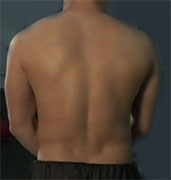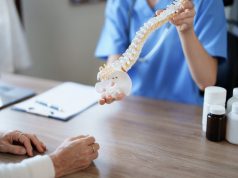No correlation for muscle cross-sectional area with low back pain/disability or structure
MONDAY, June 29, 2015 (HealthDay News) — Paraspinal fat infiltration correlates with high-intensity pain/disability and with structural abnormalities in the lumbar spine, according to a study published in the July 1 issue of The Spine Journal.
Andrew J. Teichtahl, M.B.B.S., from Monash University in Melbourne, Australia, and colleagues examined correlations for paraspinal muscle size and fat content with lumbar spine symptoms and structure in a community-based magnetic resonance imaging study. The authors measured the cross-sectional area (CSA) and amount of fat in multifidus and erector spinae and examined the correlation with outcome in 72 adults not selected on the basis of low back pain.
The researchers observed no correlation for muscle CSA with low back pain/disability or structure. There was a correlation between high percentage of fat in multifidus and increased risk of high-intensity pain/disability (odds ratio, 12.6; P = 0.007) and modic change (odds ratio, 4.3; P = 0.04). There was a correlation also noted between high fat replacement of erector spinae and reduced intervertebral disc height (P = 0.002) and modic change (P = 0.04).
“Although cause and effect cannot be determined from this cross-sectional study, longitudinal data will help to determine whether disabling low back pain and structural abnormalities of the spine are a cause or result of fat replacement of paraspinal muscles,” the authors write.
Copyright © 2015 HealthDay. All rights reserved.








